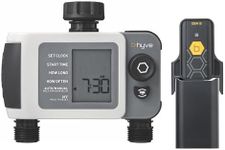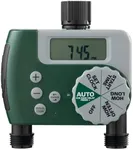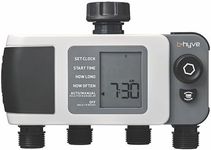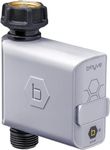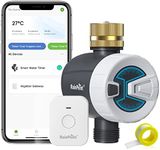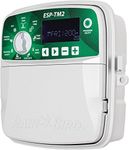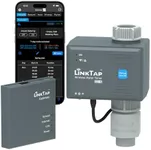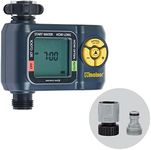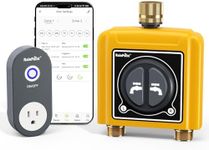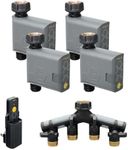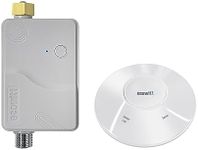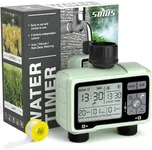Buying Guide for the Best Tap Timers
Choosing the right tap timer can make a significant difference in maintaining a healthy garden or lawn. A tap timer automates the watering process, ensuring your plants get the right amount of water at the right time, which can save you time and water. When selecting a tap timer, it's important to consider several key specifications to ensure it meets your needs and fits your watering schedule effectively.Number of ProgramsThe number of programs refers to how many different watering schedules you can set on the tap timer. This is important because it allows you to customize watering times for different areas of your garden. If you have a simple garden, a timer with one or two programs might be sufficient. However, for more complex gardens with different watering needs, look for a timer that offers multiple programs. This way, you can set different schedules for lawns, flower beds, and vegetable patches.
Duration and Frequency SettingsDuration and frequency settings determine how long and how often the tap timer will water your garden. This is crucial for ensuring your plants get the right amount of water without overwatering or underwatering. Basic timers might offer fixed durations and frequencies, while more advanced models allow you to customize these settings. If you have plants with specific watering needs, choose a timer that offers flexible duration and frequency settings to match those requirements.
Manual OverrideA manual override feature allows you to turn on the water manually without disrupting the programmed schedule. This is useful for times when you need to water your garden outside of the regular schedule, such as during particularly hot days or when planting new plants. If you anticipate needing this flexibility, look for a tap timer with an easy-to-use manual override function.
Weather ResistanceWeather resistance refers to the tap timer's ability to withstand various weather conditions, such as rain, sun, and frost. This is important for ensuring the longevity and reliability of the timer. Look for timers that are labeled as weather-resistant or waterproof, especially if you live in an area with extreme weather conditions. A durable, weather-resistant timer will last longer and require less maintenance.
Power SourceTap timers can be powered by batteries, solar energy, or connected to an electrical outlet. The power source affects the convenience and placement of the timer. Battery-powered timers are easy to install and move but require regular battery changes. Solar-powered timers are eco-friendly and low-maintenance but need sufficient sunlight to function. Electric timers offer consistent power but require a nearby power source. Choose a power source that fits your garden setup and maintenance preferences.
Connectivity and Smart FeaturesSome tap timers come with connectivity options, such as Bluetooth or Wi-Fi, allowing you to control and monitor the timer remotely via a smartphone app. Smart features can include weather-based adjustments, notifications, and integration with other smart home devices. If you value convenience and advanced control, consider a timer with these smart features. However, if you prefer a simpler setup, a basic timer without connectivity might be more suitable.
